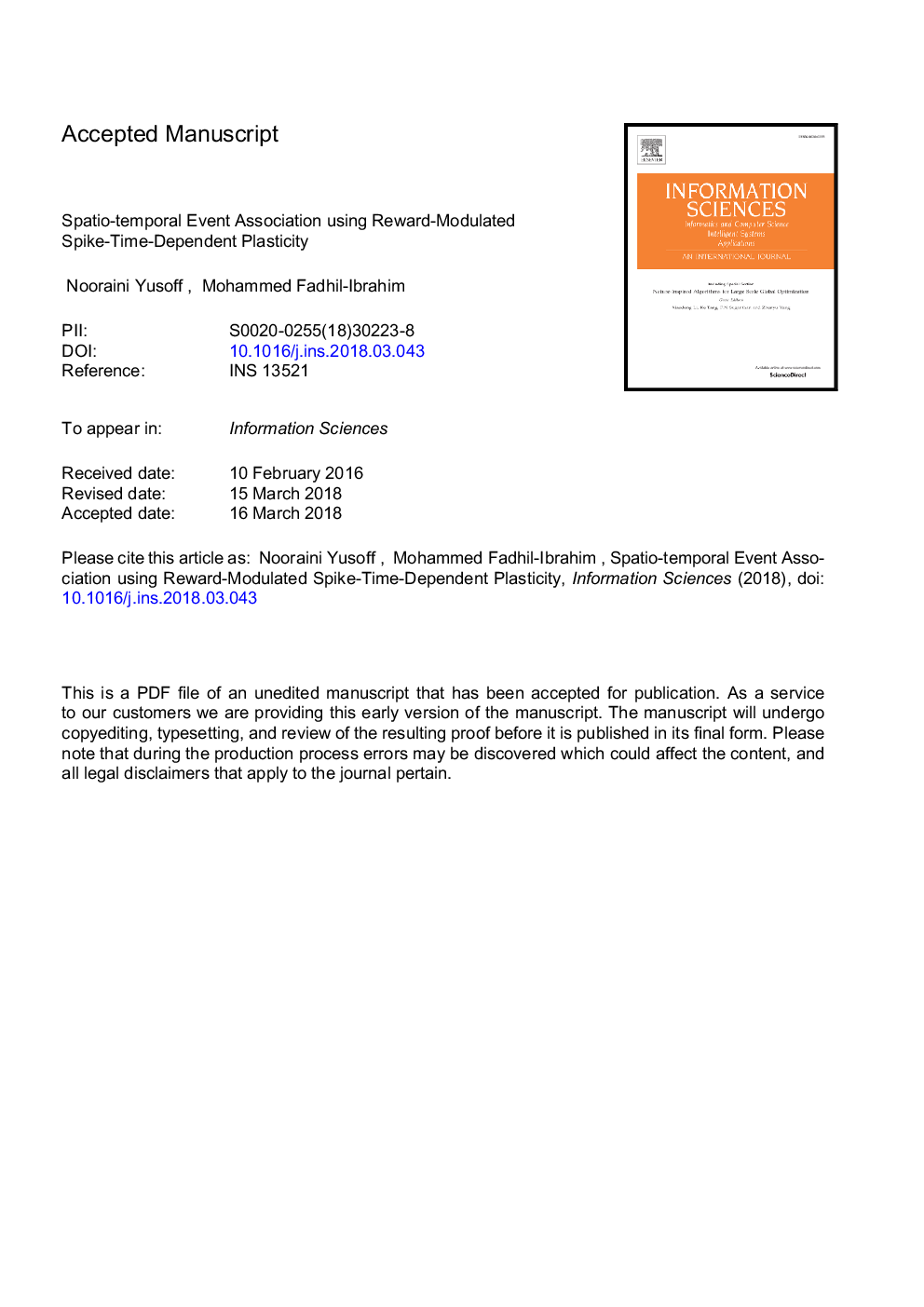| Article ID | Journal | Published Year | Pages | File Type |
|---|---|---|---|---|
| 6856441 | Information Sciences | 2018 | 24 Pages |
Abstract
For goal-directed learning in spiking neural networks, target spike templates are usually required. Optimal performance is achieved by minimising the error between the desired and output spike timings. However, in some dynamic environments, a set of learning targets with precise encoding is not always available. For this study, we associate a pair of spatio-temporal events with a target response using a reinforcement learning approach. The learning is implemented in a recurrent spiking neural network using reward-modulated spike-time-dependent plasticity. The learning protocol is simple and inspired by a behavioural experiment from a neuropsychology study. For a goal-directed application, learning does not require a target spike template. In this study, convergence is measured by synchronicity of activities in associated neuronal groups. As a result of learning, a network is able to associate a pair of events with a temporal delay in a dynamic setting. The results demonstrate that the algorithm can also learn temporal sequence detection. Learning has also been tested in face-voice association using real biometric data. The loose dependency between the model's anatomical properties and functionalities could offer a wide range of applications, especially in complex learning environments.
Related Topics
Physical Sciences and Engineering
Computer Science
Artificial Intelligence
Authors
Nooraini Yusoff, Mohammed Fadhil-Ibrahim,
